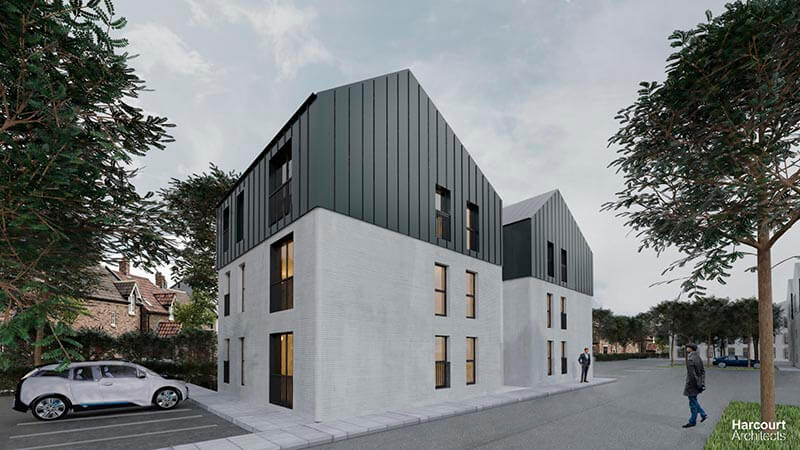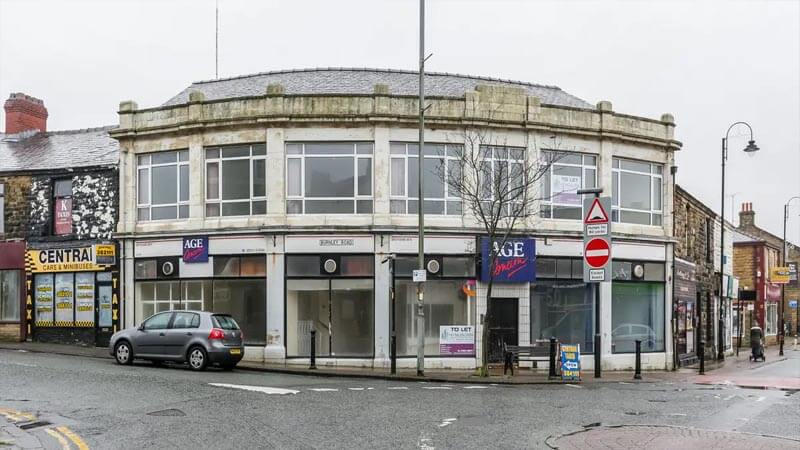Nominations for the 2022 3D Printing Industry Awards are now open. Who do you think should make the shortlists for this year’s show? Let us know by casting your vote now.
Non-profit housing restoration and construction firm Building for Humanity has announced plans to build the UK’s first 3D printed homes.
As part of the £6 million Charter Street regeneration project in Accrington, the company plans to COBOD 3D print 46 new energy-efficient homes. Once built, the housing is expected to be marketed as more accessible lodgings for veterans and low-income families in the town, who can’t currently afford to rent or buy there.
“Our aim is to ensure quality housing is accessible to everyone through our unique affordable housing model,” said Building for Humanity Founder Scott Moon. “The model is simple, to create a charitable housing institute that is driven by human fulfilment and wellbeing rather than profit. All surplus profits go to our chosen charity partner, Homes for Humanity, meaning it goes into the community to provide housing, support and training.”
“Ultimately this development is about so much more than housing, it is about people and giving them the opportunity to thrive.”

Building for Humanity
Working from its offices in Accrington, Cornwall and Newark, Building for Humanity is a Community Interest Company (CIC) that’s dedicated to tackling homelessness and assisting those facing fuel poverty. As well as seeking to help families and individuals on low-income, the firm has made it its mission to assist ex-military personnel, by housing them and involving them in its home-building activities.
However, not just satisfied with building homes for the disadvantaged, Building for Humanity prioritizes doing so sustainably. In practice, this has led the company to focus on retrofitting homes with insulation, new boilers and green energy-generating solar panels, to help residents teetering on the brink of fuel poverty.
To assist those already without a home, Building for Humanity has also turned to 3D printing, by pledging to use the technology in the construction of new high-quality, low-cost homes in Accrington. In future, the firm says 3D printing can “reinvent home ownership” by enabling the creation of low-energy, high-performance housing, which is affordable enough to be “in the reach of every person in the UK.”

A UK-first 3D printing initiative
The Charter Street project will see Building for Humanity work with partner Harcourt Technologies (HTL) to transform a disused piece of land into a ‘Community Hub.’ HTL is a COBOD partner that uses its technologies to offer construction services, such as those related to equipment leasing, servicing, training, R&D and site development.
Working with Building for Humanity as part of its latest project, the firm says it now aims to construct the “largest printed building of its kind in the whole of Europe.” When ready, the build will be divided up into a mixture of one and two-bedroom apartments and three and four-bedroom houses, interspersed with a communal garden and training hub.
In preparation for the initiative, HTL has worked with partners Lindsay Baxter Design and Harcourt Architects at an R&D facility based inside Accrington & Rossendale College. There, the firms say they’ve managed to develop a means of deploying the technology in compliance with UK building regulations, which could facilitate its wider adoption post-project.
When it comes to the Accrington builds, it’s thought COBOD 3D printing them will reduce their construction cost by 30%, while halving their lead times. Through the efficient placement of materials, HTL also aims to cut the amount of waste produced during construction by 60%, without having to compromise on quality.

3D printing affordable housing
Cost-efficiency is often cited as a core benefit of construction 3D printing, and the technology has already been used to build multiple affordable homes. In November last year, Alquist3D, the PERI Group and Printed Farms Florida, unveiled plans to 3D print more accessible US homes for rural communities, using COBOD’s technology.
Azure Printed Homes has also been contracted by Californian real estate firm ReInhabit to 3D print ten new eco-friendly houses. By 3D printing the buildings from recycled plastic, ReInhabit expects to realize significant cost and lead time gains, in a way that drives up its return on investment (ROI) when they’re rented out to residents next year.
Elsewhere, at the University of Tehran, researchers have proven that 3D printing homes improves energy efficiency. Having developed a novel concrete, the team say it can be 3D printed into housing that generates 400-times less CO2 emissions.
To stay up to date with the latest 3D printing news, don’t forget to subscribe to the 3D Printing Industry newsletter or follow us on Twitter or liking our page on Facebook.
While you’re here, why not subscribe to our Youtube channel? featuring discussion, debriefs, video shorts and webinar replays.
Are you looking for a job in the additive manufacturing industry? Visit 3D Printing Jobs for a selection of roles in the industry.
Featured image shows Building for Humanity’s proposed Charter Street homes. Image via Building for Humanity.



